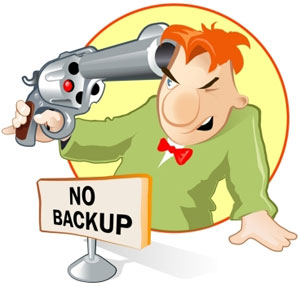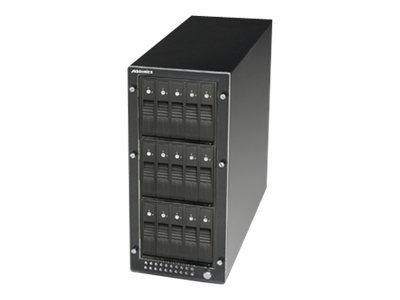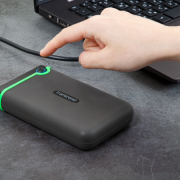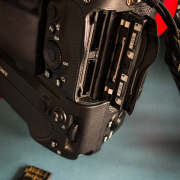Backup
Many people ask me about this so I thought it was time for another blogpost about backup….
In my opinion one of the most important things in the world to prevent dissasters.
Just to note, this image was found online so it’s not mine, but I think it describes the situation VERY well.
As most of you know we ran a computer shop for many years and one of the things that always struck me as puzzling was that often people would come in in tears with all their images/data lost. Now don’t think that their external drives crashed or whatever… believe it or not most came in with a laptop or desktop where they had stored all their images/data on and had NO (yes you read it correctly) NO backup what so ever. Some stories that stuck with me were people that lost images from deceased relatives, marriages, births etc.
For me (and I hope for you) images are the most important things to keep memory, for me images are frozen moments in time that will never ever come back. In the old days we had our negatives so if we would loose prints we could always make new one, but now a days that’s not an option anymore, if we loose the originals…. well they are gone forever. So how do we make sure it doesn’t happen?
Well sorry to tell you we can’t….
It’s impossible.
With harddrives and computers it’s very simple, they will crash…. the only thing that’s uncertain is WHEN.
How to make sure drives stay alive as long as possible
A drive can crash at any moment, it can be brand new or 20 years old, however one day it will stop working.
We can make sure it works longer by putting it outside the tower of the computer. Inside the tower it’s hot, there is often bad ventilation and to be honest if something happens with the power supply it’s much more likely to happen in the tower than external.
Simple
There are many solutions for outside storage, you could for example start with a simple USB3 harddrive which are sold for next to nothing, and it will make sure that all your files are safe that you have stored on your internal harddrive. If you only make backups from the files on your internal harddrive speed isn’t that important so get a cheap (but good brand) harddrive on USB3 and you’re all set, copying will take a bit longer than with a high speed model but it only has to be done once (later more on this puzzling remark).
More data
At one point the data storage will be much more than you can keep on an internal drive.
So now we have to go external.
There are MANY solutions for this.
You can of course stay with external USB/Firewire/TB drives, but to be honest you will very soon have a lot of them and loose track.
Let’s look at some options and what I think of them.
NAS
For me a NAS is great as backup, but not as the main storage.
A NAS is a Network Storage System and consists of one or several drives that can be accessed over the network in your home/office/studio. They can be cheap and expensive. The thing I love about them is that you can place them away from your computer, meaning if someone breaks in… you can probably still have the backup if they take everything else. Another benefit is that it can be accessed from location or by other users.
Disadvantages is speed. Even the most fast network solutions are not as fast as USB3 or TB, unless you want to pay A LOT. But also the file system can be a problem. If a casing fails it’s not as easy as taking a drive out and placing it in a computer or external casing to access the files.
Storage towers
This is my preference, and also what I use as main backup at the moment (although we are switching to a NAS for the “mirror”, still looking for a solution).
The storage towers are very fast and you can load it with many drives that (if a case files) have a standard file system so they can always be read in the computer. At the moment we use the Addonics system storage tower IX.
In this tower you can house 15 drives (3×5) but because it used port multipliers you only have 3 cables running to your computer. Our layout is that the bottom series are filled with normal drives and the top array is setup as a fast RAID0 system that is used for video editing. A second tower in the same configuration is used as mirror. This way we always have two identical towers so if one fails (or gets stolen) we can always continue working.
Out of the house
Now that you have all your backups in order…. what happens in case of a fire, burglary etc.
Well first of all let’s hope it will never happen, but if it does it would be great if you have another backup.
For this other backup you can use external drives again.
For us this means that once every month or so we backup all the new material on a drive that is actually stored off site, if a worst case scenario happens we can just pick up that drive and we would have only lost a few weeks at most. Still a disaster of course but much better than loosing everything.
The cloud
The cloud is all around us… well ok that sounded weird, but you know what I mean right?
To be honest I don’t really believe in cloud backup for images, but let me be clear it can be awesome to store a “backup”.
We use SMUGMUG for this.
SMUGMUG is a company that not only hosts our portfolio but you can actually also have some hidden folders in which you can store as much data as you want. This means that I will actually upload the best retouched images I have on there in the highest resolution ARGB JPG. It’s not a RAW or TIFF but at least I have something if all 3 backups fail…. yeah that’s pretty paranoid I know.
The added advantage of the SMUGMUG storage is that when we travel I can always deliver high quality images to my customers, even when I’m not in the studio.
Software to backup
Also here there are MANY options.
I use a program called Carbon copy for the mac, it’s not free but it’s very good in what it does.
But just browse the web and find the one that fits your need.
Make sure you have the option for incremental backups however, in that case it will only copy the files that have chanced or are new, and that saves a lot of time.
Conclusion
There are many solutions, but one thing is sure…. backups are important.
With the prices per Terabyte now a days there is absolutely no reason to not backup.
As you can see I did not mention RAID solutions, now they might seem safe…. and are often also labeled and advertised as safe. However in our time in IT I did have seen a lot of problems with certain casings and software which actually made me switch from a high-end (small business) RAID solution to two towers in mirror (which of course is also a sort of RAID) but without the file system. The solution we use now works like a charm and is relatively cheap, the only investment is the towers but after that you will probably never grow out of them because drives get bigger every year so you can keep upgrading.
In the future we will probably switch to a NAS for the mirror, but as mentioned we are still looking at options for that, the main mirror will however stay the storage tower because it’s just as fast as the internal drives and it’s a very safe environment for the drives with a dedicated cooling system and power supply.
I hope this blogpost helped you a little bit in making your images safer.








Personally I use CrashPlan for online backup. Automatically makes backups and for a fixed price / month you may add unlimited number of computers with an unlimited amount of data. Also offers the possibility to make backup to other disks and/or computers. Only disadvantage is that it takes VERY long time to make the initial backup online. But, they do offer a service for this where you can send them a harddisk that they will copy to your profile.
I can recomand Jotta 4 online backup. i pay 6$ a month for unlimited online backup.